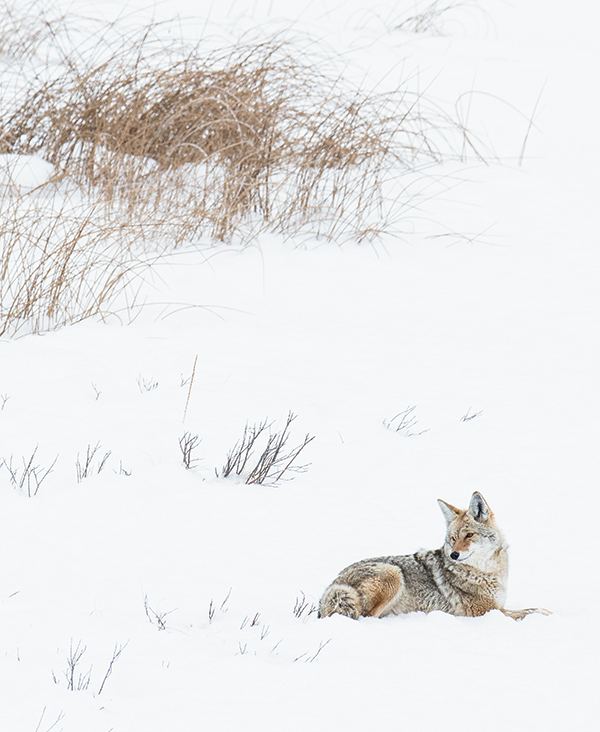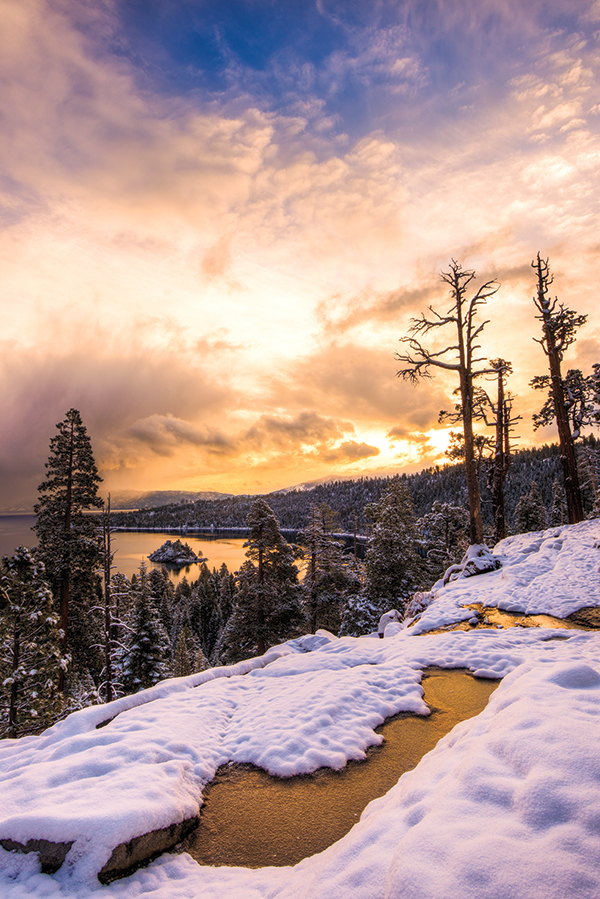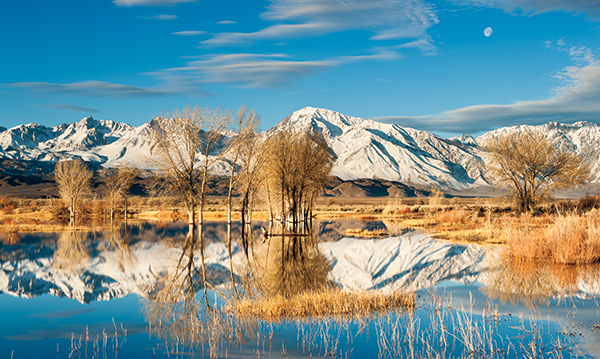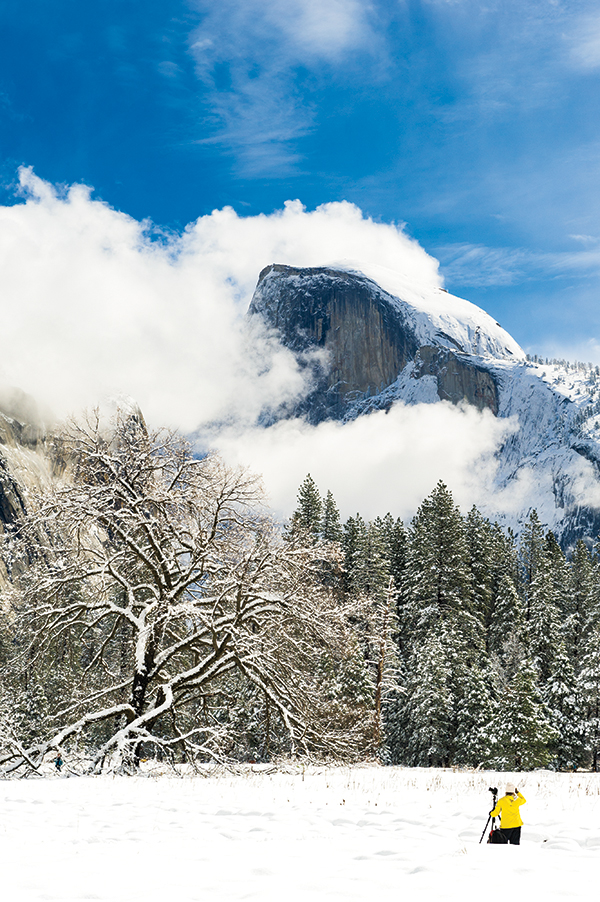Winter Wonderland: 9 Reasons Why Wintertime Is the Best Season for Photography

While most photographers are packing their gear away for winter, an increasing number are finding winter to be their favorite season for photography. Photographers willing to brave the cold often find popular locations deserted, dramatic light, and fresh snow that makes scenes come alive. Whether it’s a once-in-a-lifetime trip to a destination like Yellowstone, Alaska, or Yosemite, or something closer to home, winter is a great time to get to know these locations in a much more intimate way and at slower pace. Here are nine reasons why winter is the best season to go out and shoot.
1. Lack of Crowds
Have you ever tried to shoot at that famous overlook at your favorite national park during peak season? Better show up early and take a number! As a regular Yosemite photographer, I know places like Tunnel View are hardly worth even trying to park at during the peak season, but come winter I have spent many amazing sunsets all alone at what may be the most popular photo location in the world. By being willing to brave winter weather not only does one avoid the crowds but it also allows one to slow down and look beyond the “classic” views and start creating more unique images that just wouldn’t be possible during the hustle and bustle of peak season. In places where parking and tripod access is at a premium, it also means one can adapt more quickly to the weather without having to worry about getting a new parking place.

2. Less Competition
Fewer photographers also means less competition and more chance of creating new unique images. Especially in a well-known location such as Yosemite or Lake Tahoe, winter photographers have the opportunity to create a different take on “classic” locations that otherwise have been shot to death. It also means that when amazing light shows happen there won’t be 100 other photographers lined up taking the same image. From a business or art standpoint this means you have a better chance of standing out from the crowd.
3. Better Low-Angled Light
Speaking of amazing light, during wintertime in the northern hemisphere the sun is at a lower angle to the horizon. It is as if the sun rises and sets more slowly because it just doesn’t get as high in the sky. The farther north you go, the greater the effect, too. By the time you are in Alaska the sunrise/sunset can seem to last for hours. The practical implication of this is that landscape photographers can shoot during more hours of the day while still avoiding the harsh light of midday. Also, don’t forget that colder winter air is often cleaner and makes for sharper images of distant subjects, especially right after a storm.

4. More Interesting Weather
For a landscape photographer light and weather are the elements that turn a good composition into an amazing image. Serious landscape photographers know that means braving the worst weather with their cameras in the hope that the storm could break with a moment of glory light. Winter increases one’s chance of success because the weather is more dramatic and unsettled. While quickly changing bad weather can be a hassle to deal with in terms of driving and staying warm, it offers a much higher success rate for those willing to wait it out. Some of the best landscape images of all time are from clearing storms, so remember to pack the chains, extra food, and enough layers to wait out a storm.
5. Fresh Snow
In addition to amazing storm light, one of the big advantages of shooting right after a winter storm is fresh, clean snow. Fresh snow completely clears the ground of dry grasses, branches, sticks, trash, and mud. It is as if everything in the world is new and has never been touched by human hands. In many locations this is the key to truly amazing photography, but it typically doesn’t last long so take advantage of it while it lasts. More than once I have spent 10 hours straight shooting in Yosemite Valley as a storm was clearing and the valley had a new clean blanket of snow. Just remember to pack snacks so you don’t have to stop until the snow either melts out of the trees or gets dirty with falling needles and leaves.

6. Winter Trees
Another plus of shooting in the winter is how snow and ice turns trees into frozen sculptures. I know more than one photographer who has done entire gallery shows or books of just winter trees. The contrast and patterns created between white snow and ice in relationship to the dark branches allows for endless compositions in both color and black and white. Remember to not stand right under that heavily laden frozen branch as the sun starts warming the tree or you might get a big wet surprise!
7. Ice Patterns
For those photographers interested in the abstract beyond winter trees, ice provides an endless supply of subject material. Ice patterns in a frozen pond make for a great foreground when paired with a towering snow-capped mountain, as does an intimate portrait of icicles hanging from the one remaining fall leaf on a branch, or a backlit frozen waterfall; the possibilities are endless. For images like this often colder is better, so look for shaded areas with even light and where ice is still frozen solid.

8. Snow Adds Contrast
In addition to cleaning up the foreground, a fresh dusting of snow on distant peaks also helps add contrast and drama to a grand landscape. By adding snow to a distant peak it gives the image a more three-dimensional feel and makes the image pop more due to a wider color palette. Adding snow to the scene also gives a strong feeling of season, and gives more emotion to the image. I’ll take a freshly dusted peak with winter clouds versus a barren cloudless summer view of the same peak any day.
9. Winter Wildlife
While wildlife photography happens year round, winter is still one of the best seasons for spotting animals in the field. Not only do they have fewer grasses and leaves to hide among, animals are often hungry and more willing to take risks of being out in the open. In addition to easier wildlife spotting, winter also provides stark backgrounds that lend themselves well to simple clean, dramatic images. Imagine a Yellowstone coyote feeding on a kill among brush and dead grass versus the same coyote on a clean, stark white meadow.

Winter Photography Tips
Here are a couple of tips that will help you get the most from your next winter shoot. First, get a good pair of snug but not tight lightweight soft-shell gloves. Along with being wind- and water-resistant, soft-shell gloves also stretch which allows you to operate your camera without removing them. Also, bring some chemical hand warmers to put in the palm of your gloves and your fingers will be much happier than had you used a heavier glove that would have limited your ability to use your camera (if it is really cold, bring warmers for your toes as well).
Second, keep your jacket on and the car cold all day. By keeping the car cold you can leave your camera gear sitting out in the backseat without it fogging up. When working in subzero temperatures even having the car warmed to 40 degrees F will allow you to warm up while keeping your camera functional. When you do stop shooting for the day, pack everything back in your camera bag and seal it up tight. This will allow it to warm slowly and without condensation.
Josh Miller’s images have been featured in publications throughout the world and his work is represented by Aurora Photos. To find out more about his work and his workshops, follow Miller on Facebook and Instagram @joshmillerphotography or check out his website, joshmillerphotography.com.














































